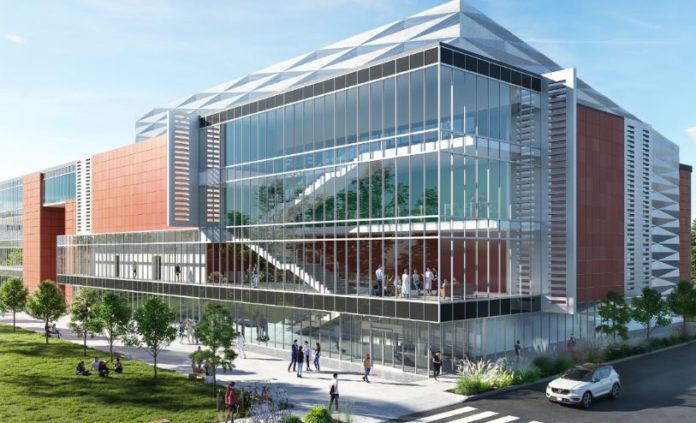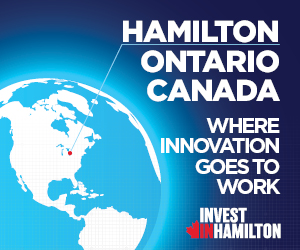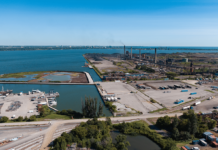Offering hard to find scale-up Bio-Tech lab and workspace
McMaster Innovation Park is the realization of Hamilton, Ontario’s position as a life sciences powerhouse.
MIP, just like McMaster University itself, is earning an international reputation as a place of discovery, commercialization and entrepreneurship. It is the bridge between research and industry, bringing together the power of Hamilton to turn ideas into commercial realities.
“MIP is a western anchor of the life sciences corridor between Hamilton and Toronto that features MIP and McMaster University on one end and MaRS and the University of Toronto on the other,” said Ty Shattuck, CEO of MIP.
It is home to the cutting-edge Biomedical Engineering and Advanced Manufacturing Centre, the McMaster Automotive Resource Centre, and CanmetMATERIALS, Canada’s largest research centre specializing in metals and materials fabrication.
The Atrium@MIP, a former office building for Westinghouse, houses more than 70 businesses, along with commercialization accelerator Innovation Factory.

Now an ambitious five to seven-year $2.1-billion buildout of the 53-acre campus is underway that will add 1.8 million square feet of labs, offices and innovation spaces, along with hotels, a convention centre and residential units.
The Life Science MegaHub at MIP will deliver the kind of space and resources that rapidly scaling companies can’t currently find in Canada, says Shattuck.
“Companies that are scaling up in Hamilton are seeing investments in the hundreds of millions and are on the cusp of being world-beaters. In the past, all of that was going to the United States because we just didn’t have what they needed. That has changed. We aim to become the Boston of the north,” he said.
MIP is at the centre of the story of life sciences in Hamilton, said Alex Muggah, director of the Synapse Life Science Consortium. “It has the size and magnitude to capture national and international investment and that is putting the city on the global map.”
That includes the arrival of CCRM, a leader in developing and commercializing regenerative medicine based technologies and cell and gene therapies. CCRM is expanding its footprint from the MaRS Discovery District to partner with MIP on a biomanufacturing campus. That signals a mind shift, says Shattuck.
“Companies aren’t leaving Toronto, but expanding to Hamilton. This isn’t Hamilton versus Toronto or MIP versus MaRS. It’s Hamilton plus Toronto and MIP plus MaRS, and U of T plus McMaster.”
Also underway is the conversion of the former Hamilton Spectator newspaper office into 300,000 square feet of offices, labs and data centre. One-third of that will be dedicated to data science.
“We know how critical data integration is to managing the pandemic, in terms of testing, tracking infection rates and isolating hotspots and transmission vectors. Bringing data experience into a biomedical centre creates tremendous synergies,” said Shattuck.
A transformational project for MIP is the reimagining of a four-bay glass warehouse. An entire bay will become The Global Nexus for Pandemics and Biological Threats.
It’s a reminder that MIP has what Toronto has run out of – the space needed to conduct research and scale-up production, says Karen Mossman, vicepresident of research at McMaster.
“Hamilton’s manufacturing capacity also means there is expertise here to build things. That is truly powerful.”

















